So What, Who Cares (vol 2, issue 105) Why the hottest fight in town is El Niño versus The Blob
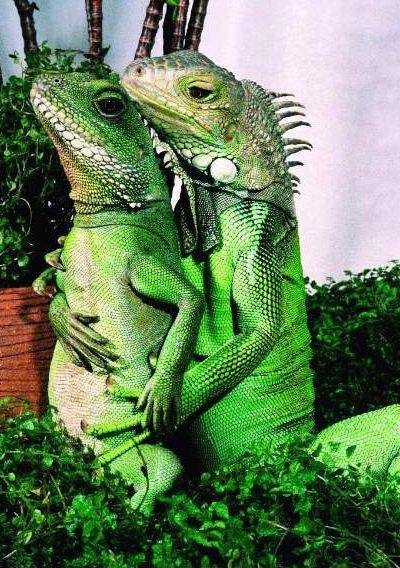
Hello! A quick programming note: I will be taking an end-of-summer break from So What, Who Cares? from August 24 to September 4, but will mark la rentrée with a Labor Day issue on September 7.
I already have one foot out the door: As you read this, I'm on my way north for a weekend of tree-hugging in Redwood National & State Parks. According to their Facebook page, they're very excited that today is National Lizard Day.
What's your take on lizards?
A. Only acceptable if dressed in tiny doll clothes?
B. Only acceptable if they're taking pictures like it's prom night (at right)?
C. Acceptable at all times?
D. Never acceptable.
Share your lizard-related feelings via Twitter or email.
*
"El Niño versus The Blob" sounds like a wrestling line-up, but it's actually a battle for the direction this winter is likely to take. As you may already know, El Niño is basically "the Pacific Ocean warms up and a lot of extreme weather happens," and as you may also know, the U.S. west is in the middle of an extreme drought and so would welcome the kind of super-wet conditions El Niño usually precipitates.
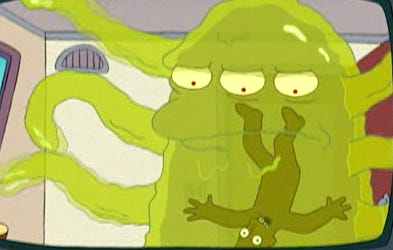
However, we now have The Blob to contend with, and the thing about this big, persistent spot of warm water is that it's teamed up with a high pressure ridge to keep many winter storms from breaking in California over the last few years. At least one scientist is warning that The Blob is a "wildcard" in this year's storm predictions.
So what? A lot of the recent coverage has focused on the idea that one good, wet winter can make up for several years' trending drought. Since nobody is sure how strong El Niño is, either it'll overwhelm The Blob and we'll get a wet season, or if El Niño and the Blob will basically cancel each other out. Right now, climatologists are hopeful for the former, saying California will get an historic El Niño season.
Who cares? So many people care about whether or not we get a major El Niño.
Among them: farmers who are desperately in need of water (vol 2, issue 40); tourist industries that rely on snow; firefighters who are struggling with budget shortfalls; small communities in danger of turning off the tap; fisherman for whom The Blob is not great news for commercial catches
As I wrote in vol 2, issue 35:
A so-called warm "blob" of water that's spreading down from the Gulf of Alaska has pushed ocean temperatures up 3.6 to 5.4 degrees (F) above average. These higher temperatures have been fingered in die-offs among Cassin's auklets and California sea lion pups; Fraser River sockeye salmon have fled to where commercial fishers can't reach them; scientists are also expecting shrimp yields to plunge, since shrimp are historically vulnerable to higher water temperatures.
There are currently two blobs off the coast of the western U.S., and climate-watchers say these guys are remarkable for both their size and their staying power.
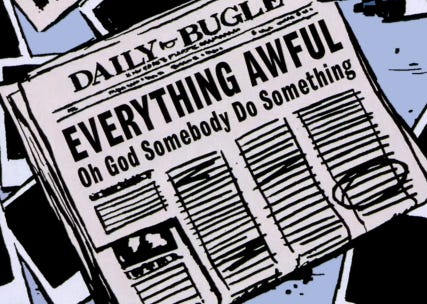
Another small-but-overlooked player in this winter drama: the retail industry. Individual retailers are notoriousfor blaming the weather for lower-than-expected sales, but that's small potatoes compared to the losses that could pile up if major shippers like FedEx or UPS are sidelined by bad weather during the holiday season (vol 1, issue 63). At least one forecast from the National Oceanic Atmospheric Administration projects El Niño hitting in late fall/early winter, which is prime holiday retail time.
(I would love to see what the in-house meteorologists at WalMart and Home Depot are predicting too.)
And finally, take a look at what the insurance industry is doing. If this winter is whammied by a "godzilla El Niño," there will be flooding, mudslides and other weather-related disasters, with insurance losses estimated in the trillions of dollars. Not helping the situation: Because California lost 91% of its coastal wetlands to development, the state lacks one of the major sources of flood control.
Since I happen to live on an island largely reclaimed from coastal wetland, I can't wait to see how this plays out.
*
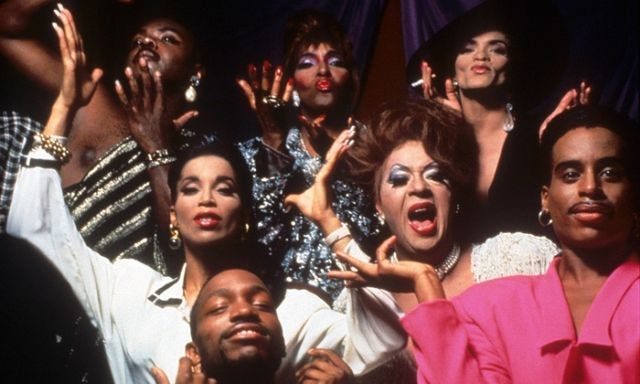
Your pop-culture note of the day: One of the perks of having a Netflix subscription is how it allows me to watch all the documentaries I saw advertised in the pages of the Washington City Paper way back when I was a high schooler stranded outside the Beltway and convinced things would be so much cooler if I lived within walking distance of a Metro stop.
(Patton Oswalt had a parallel experience, documented in his "Sterling, Virginia," routine, which has some swears in it, so beware if you click that at work.)
I digress. Netflix is how I finally, finally got to see Paris Is Burning, a documentary about the drag ball culture of the late 1980s.
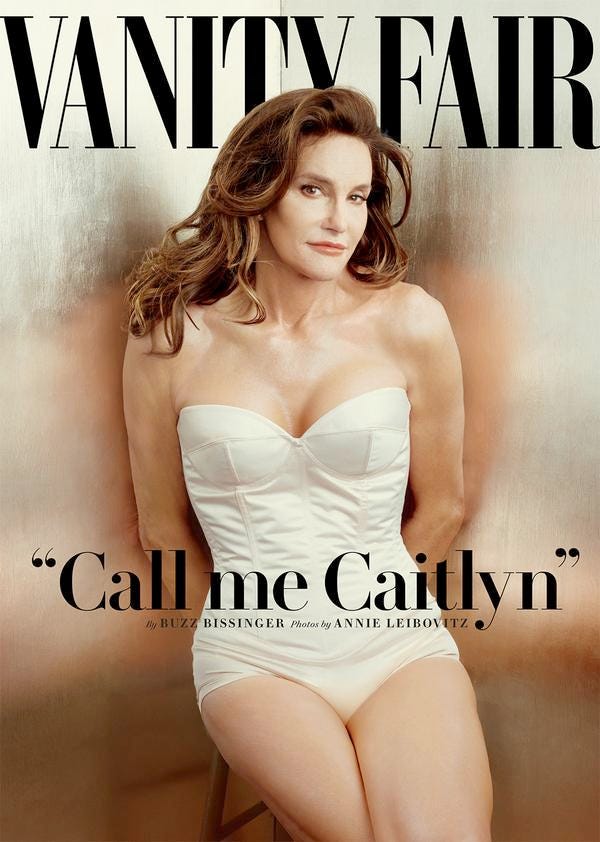
Watching the documentary in 2015 provides an opportunity to meditate on the film as a snapshot of its time -- all of but two of the participants in the film have since died, either of hate crimes or AIDS-related complications -- and as an historic frame of reference for one of the biggest pop culture stories of 2015, Caitlyn Jenner's introduction to the world. Jenner herself has been very open about the privileges her skin color and wealth afford her, and those words are thrown into even starker relief when you see a young black woman in Paris Is Burning lounging in a cluttered bedsit, daydreaming about how she just wants to get the money to "become a biological woman of the United States in 1988."
Adjacent to this juxtaposition is Lauren Levitt's essay, "Reality Realness: Paris is Burning and RuPaul’s Drag Race." After elegantly demolishing the argument that documentary films have a patina of high-minded authenticity that reality TV does not, Levitt goes on to point out the real conversation taking place across Paris Is Burning and RuPaul's Drag Race: one in which people DIY their identities, their family formations, and their sense of social justice.
Levitt also tackles one of the main criticisms leveled at Paris Is Burning: the documentary "exoticizes" drag ball participants and exploits them. For more on this critique, this June 2015 Guardian article provides a nice historical overview for the layperson and a look at how filmmaker Jennie Livingston continues to engage with the community she documented 30 years ago.
*
A NEW MONTH, A NEW FOOTER: Here's a free and easy way to show people you like them -- send them here to subscribe to So What, Who Cares? You can plumb the archives here. You can always reach out to me via Twitter or email. You can go where you want to/ to a place they'll never find/ and we can act like we come from out of this world/ and leave the real one far behind.


